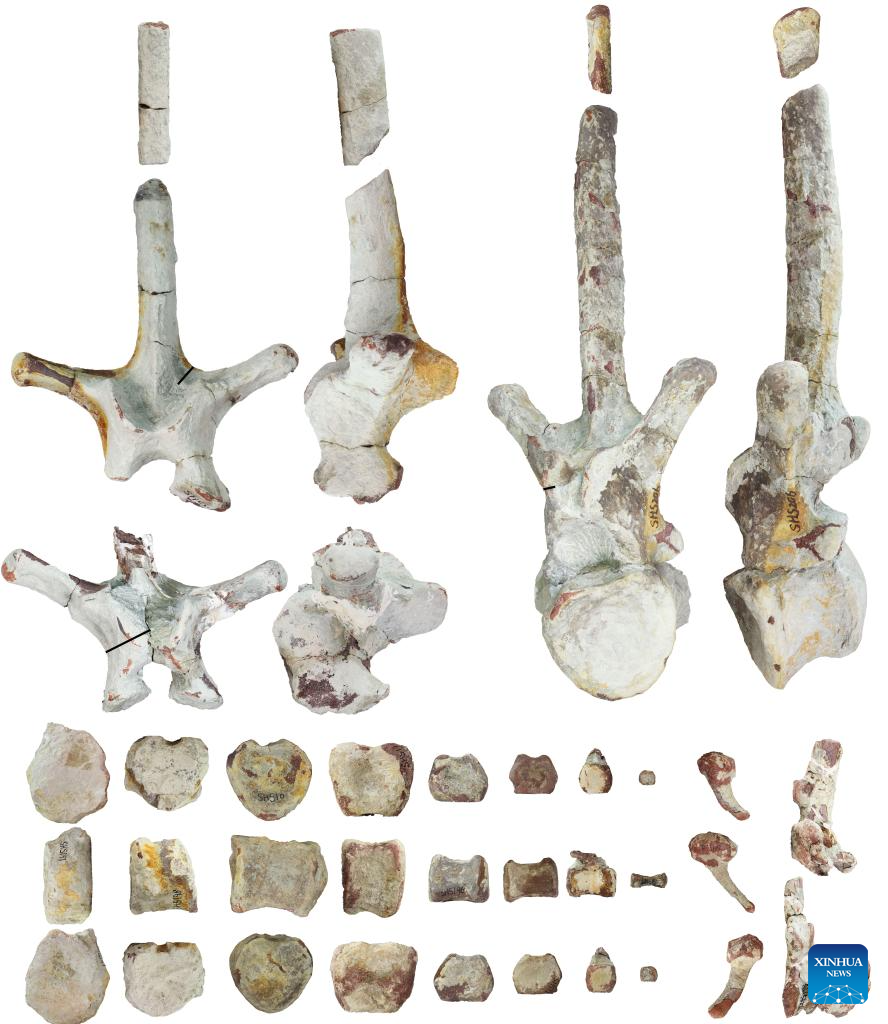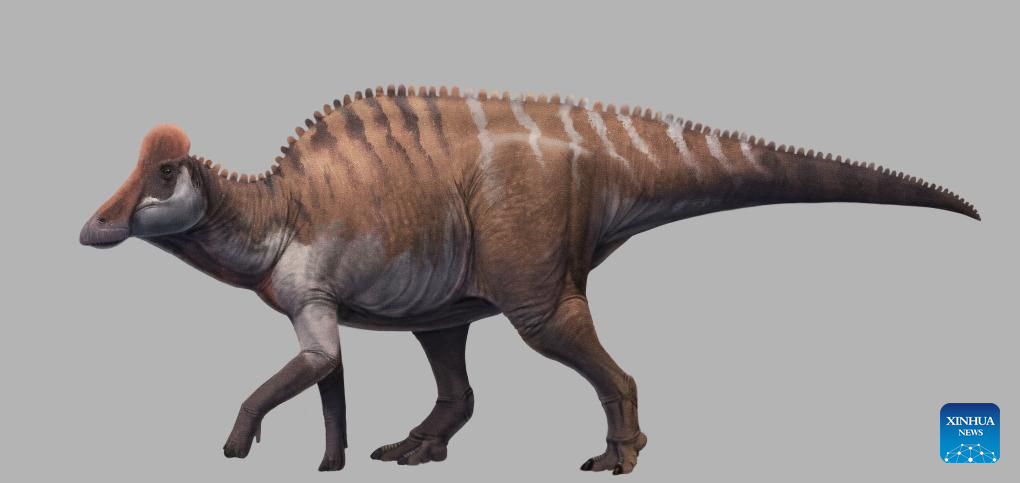
This undated file photo provided by Xing Lida, a paleontologist at the China University of Geosciences (Beijing), shows a set of skeletal dinosaur fossils discovered in Sihui City, south China's Guangdong Province. (Xinhua)
BEIJING, Feb. 10 (Xinhua) -- Scientists have confirmed that a set of skeletal fossils discovered in southern China belonged to duck-billed dinosaurs from over 70 million years ago, expanding the region's fossil record of these large, toothy creatures that likely migrated from North America.
The bones were found in May 2009 by a Chinese amateur fossil hunter at a construction site in Taipinggang, Sihui City, Guangdong Province, and he donated them to a local museum.
After cleaning and restoration, researchers in 2020 identified the fossilized skeleton comprising dorsal and caudal vertebrae, a humerus, ilium, femur and tibia. They believe the fossils belong to the tribe Lambeosaurini, a subfamily of plant-eating Hadrosauroidea dinosaurs that lived during the Cretaceous period.
The study, led by paleontologists from China and Canada, was published in the journal Historical Biology in late January.
According to the research team, Hadrosauroidea is renowned for its distinctive duck-billed mouth structure. These dinosaurs had thousands of teeth well arranged within their jaws, enabling them to exhibit strong chewing efficiency and viability.
Lambeosaurini also possesses a unique cranial structure featuring narrow hollow nasal bones, which is likely responsible for their ability to make trumpet-like sounds that they use for communication.
First author Wang Donghao, a PhD student from China University of Geosciences (Beijing), noted that the research team had identified long and narrow neural spines on the fossil specimen, which is an extremely rare feature. However, the fossils are mainly fragmentary bones and were not well-preserved, lacking substantial biological information about the dinosaur's cranial structure.
The researchers estimated that the creatures were not yet fully grown, measuring about 8 meters in length. They identified them as a more derived clade of Lambeosaurini dinosaurs that migrated from North America back to Asia via the Bering Strait, as their tall and narrow neural spines are a common trait among North American dinosaurs.
The fossilized bones are the first record of Lambeosaurini in south China, and "they represent the only evidence suggesting a potential migration of North American dinosaurs to the region in Late Cretaceous," co-author Xing Lida, a paleontologist from the university told Xinhua on Monday, noting that the study will help understand the ecological conditions across various regions before the mass extinction during the Late Cretaceous period. ■

This image provided by Xing Lida, a paleontologist at the China University of Geosciences (Beijing), shows a restoration drawing of the dinosaurs based on the skeletal fossils discovered in Sihui City, south China's Guangdong Province. (Xinhua)



